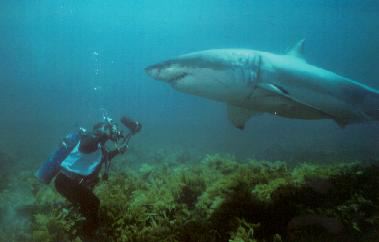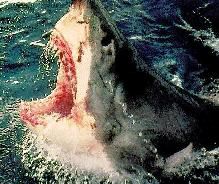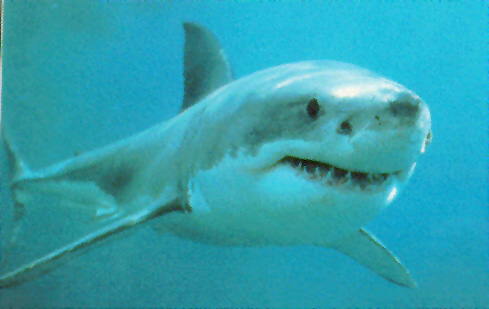|
|
|
 |
White Shark (Carcharodon carcharias Linnaeus) |  |
|
Identification |
||
 |
Diet and distribution The most commonly encountered White Sharks are between 3-4m in length. Female White Sharks mature at 4.5-5m in length. The impressive 2.3m specimen in the Australian Museum collection is only a juvenile. Fishes this size normally eat squid and other fishes such as stingrays and other sharks. As the fish matures, its diet changes. Adults White Sharks eat seals, sea lions, dolphins and dead whales, although some will continue to eat fishes such as snapper. They have also been known to eat elephant seals, sea otters, turtles and sea birds. White Sharks are found worldwide in temperate, coastal waters. In Australia they have been recorded from southern Queensland to northwestern Western Australia. Despite Australia's reputation as "the place to go to see White Sharks", they are uncommon. There are no reliable estimates of the number of White Sharks in Australian waters. All evidence however suggests that the numbers of fish are decreasing. In fact in many places around the world the White Shark has been made a protected species. This happened first in South Africa in 1992, then in Namibia, the Maldives, and in Florida and California. This species is now protected in all Australian states and territorial waters. |
|
 |
Classification Research on the aging of White Sharks is still being undertaken. Many shark species can be aged by examining the growth rings in their vertebrae. This technique has yet to be confirmed for the White Shark. It is believed that a White Shark of 5-6m in length is likely to be 15-25 years old. The White Shark is related to the Mako and Porbeagle Sharks. It is classified in the family Lamnidae. |
|
 |
|
|